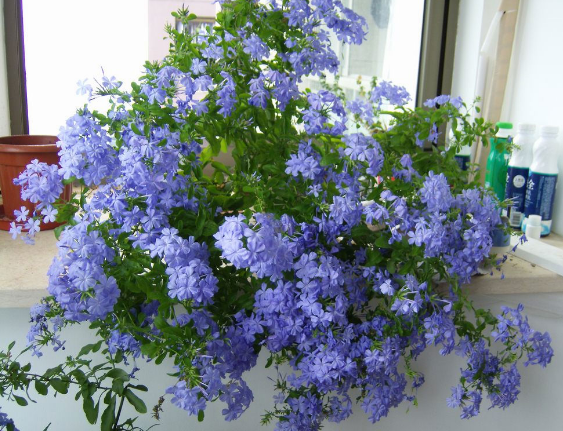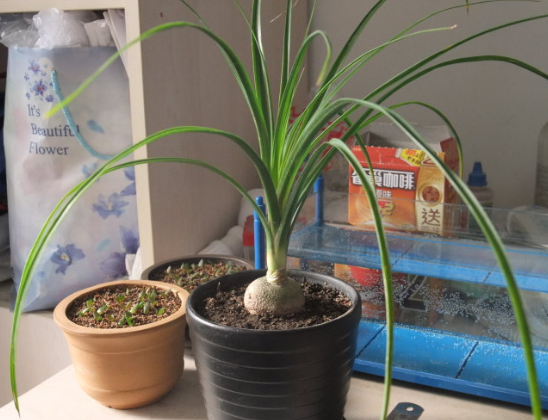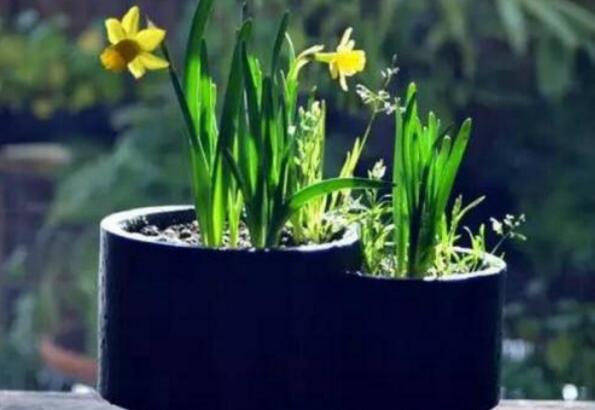How to raise blue snowflakes, the breeding methods and precautions / sufficient light of blue snowflakes
Blue snowflake, is a kind of plant under the family Danaceae, this kind of plant likes the warm environment, but also more heat-resistant, so how to raise blue snowflake, light is the key, to maintain sufficient sunshine can make it grow healthier, about the blue snowflake breeding methods and precautions have what, the following editor to take you to understand.
First, how to raise blue snowflakes / get enough light

How to raise blue snowflakes well is related to many aspects, of which light is the key, of course, if you want to raise it well, soil, sunshine, temperature, watering and other aspects need to be paid attention to. Today, the editor's article is to take you to understand the methods and precautions of raising blue snowflakes. Let's move on.
2. Culture methods and matters needing attention of blue snowflakes
1. Soil
In the cultivation methods and matters needing attention of blue snowflakes, the selection of soil is a very important part. After all, raising plants needs soil, and choosing the right soil is of great help to the growth of blue snowflakes, of which garden soil, rotten leaf soil and coarse sand are the best.
Note: blue snowflakes like slightly acidic soil, and the soil should be loose, so that its drainage will be good. Blue snowflakes with good drainage will be able to absorb nutrients better.
two。 Light
Blue snowflake is a kind of plant that likes warm environment very much, it is best to put it in a bright place, because blue snowflake has to accept direct sunlight for several hours every day, but do not expose yourself to the sun for a long time.
Note: when the sun is strong at noon in summer, it is best to put blue snowflakes in the indoor half-shade and let them absorb more sunlight in winter.
3. Watering
In the breeding methods and matters needing attention of blue snowflakes, watering is also a more important link. According to the season and environment, the time and amount of watering are also different. You can choose to water more in summer and less in winter. Just keep the soil dry.
Note: try to spray water when watering, so that blue snowflakes can better absorb moisture, which we should keep in mind.
4. Temperature
In each stage of the blue snowflake adapt to the environmental temperature is not quite the same, generally speaking, it is best to control the temperature at about 22-23 °during its germination period, and the best temperature during the growing period is between 18-25 °. In this environment, your blue snowflake must be able to grow healthily.
Note: blue snowflakes are not very cold-resistant, so you must remember to keep out the cold in winter. Don't let them stay warm below 7 °for too long. It is best to move blue snowflakes indoors. If inconvenient flowers are covered with protective film, they can be used to resist drought and let out when the weather is slightly warmer at noon.
5. Fertilizer application
If you want blue snowflakes to grow healthily, fertilization is very important, because fertilizer is the nutrient of plants, it is difficult for plants to grow normally without nutrients, and the requirements for fertilizers are different in different periods of time, so this must be grasped clearly.
Note: in the growing period of blue snowflakes, it is best to apply fertilizer every half a month, increase phosphorus and potassium fertilizer after May, stop applying nitrogen fertilizer in September, which can improve the cold resistance of blue snowflakes, and stop fertilizing in winter.
Matters needing attention in blue snowflake culture / basin change and pruning
1. Change the basin
Blue snowflakes have to change basins every spring, because with the growth of blue snowflakes, the size of the basins will gradually become larger, just as people's clothes do not fit. When changing the basin, the whole blue snowflake should be taken out of the basin, and the old soil should be replaced with new soil and replanted.
two。 Pruning
When changing pots in spring, you also need to trim the old branches of the blue snowflake, which will make the blue snowflake look more round and make the whole look more beautiful.
How to raise blue snowflakes? Culture methods and matters needing attention of Blue Snow Flower
Blue snowflake, also known as ash wood, horn column flower, etc., is a perennial herb of the family Pleurophyllaceae. The leaves of blue snowflakes are delicate and luxuriant, and the design and color is cold and noble blue, which has a very high ornamental value and is suitable for potted indoors. So, how to raise blue snowflakes? The breeding methods and matters needing attention of blue snowflakes are introduced as follows.
Picture: blue snowflake
I. Culture methods of blue snowflakes
1. Soil: blue snowflake likes loose, fertile, well-drained slightly acidic soil, and the culture medium can be prepared with rotten leaf soil, garden soil, coarse sand and other materials.
two。 Temperature: blue snowflake likes warm environment, not cold-resistant, the suitable temperature for growth is 18-25 ℃, and the winter temperature is above 7 ℃ can survive the winter safely. When the temperature is higher in spring, you can open the window for ventilation, and the room temperature is higher, which is conducive to the growth and flowering of blue snowflakes.
3. Lighting: blue snowflakes like plenty of sunshine, resistant to semi-shade, avoid strong light exposure. Indoor breeding blue snowflakes should be placed in the sun everywhere, exposed to the sun for several hours every day. In summer, shade should be given to prevent strong light exposure, and blue snowflakes should be given sufficient light in winter to make them safe to survive the winter.
4. Watering: blue snowflakes need a lot of water during their vigorous growth, and in order to keep the environment around the plant moist, you can spray water on blue snowflake leaves or put them on wet pebbles in flowerpots. Reduce the amount of water in winter and keep the basin soil dry.
Picture: blue snowflake
5. Fertilization: blue snow peanuts are fertilized once every semimonthly for a long time. After sprouting, blue snowflakes should be mainly nitrogen fertilizer, and phosphorus and potassium fertilizer should be increased after May to promote blue snowflakes to blossom and flourish. Stop applying nitrogen fertilizer in September and apply phosphorus and potassium fertilizer twice to improve the cold resistance of the plant. Stop fertilizing in winter.
6. Change the basin: blue snowflakes turn the basin once every spring, take out the plant from the soil, remove part of the old soil, cut off the rotten roots and old roots, replace them with new culture soil, and replant them.
7. Pruning: pruning once in combination with turning the basin in spring, cutting off dense branches, thin and weak branches, and cutting too long branches, so that the blue snowflakes are round and well ventilated and transparent. For the old plants with decreased growth potential for more than 3 years, the amount of pruning should be increased and fertilizer should be applied after growth to promote the germination of new branches and the promotion of flowering. After blooming, the residual flowers should be trimmed and the thin branches should be thinned out.
Picture: blue snowflake
Matters needing attention in blue snowflake culture
Blue snowflakes are born in the foothills of shallow mountains and on the peaceful ground. In North China and other temperate regions, blue snowflakes like warmth and are not tolerant to cold. In North China and other temperate regions, flower cultivation exists objectively, with suitable growth temperature of 25 ℃, light preference and shade tolerance. It is not suitable to be exposed to the sun in the hot sun. Drying is disadvantageous to its growth and is not resistant to drought. It is suitable to grow on sandy loam soil rich in humus and smooth drainage. Blue snowflakes are propagated by cutting. Cutting propagation of blue snowflakes can be carried out in spring, select sturdy annual branches, select 8-10 cm as cuttings, cut them in the culture soil, and cover them with plastic film. Keep the indoor temperature at 20-24 ℃. After 20-25 days, the branches of blue snowflakes can take root.
[editor's conclusion] the flowers of blue snowflakes are elegant and fresh, with intoxicating sky blue, which is very suitable for keeping indoors. The above introduces the breeding methods and matters needing attention of blue snowflakes. I hope it can be helpful to everyone!
How to raise blue snowflakes the culture method of blue snowflakes
As we all know, blue snowflake is a very beautiful flower. But when it comes to growing blue snowflakes, you may not have all the knowledge you need. What is the breeding method of blue snowflakes? The following is to share with you, those who are interested can try breeding at home.
How to raise blue snowflakes the culture method of blue snowflakes
I. the culture method of blue snowflakes-- light.
Blue snowflakes are perennial flowers, and they like plenty of sunlight most. Raising blue snowflakes indoors needs to be placed in places with direct light as much as possible. But when the direct sunlight in summer is too strong, it should be sheltered properly.
2. the culture method of blue snowflake-- water.
The watering of blue snowflakes is very important to properly keep the soil moist without stagnant water. In winter and summer, blue snowflakes will go into dormancy, and the number and amount of watering should be reduced.
Third, the culture method of blue snowflake-- fertilization.
Blue snowflakes like fertilizer, which needs to be fertilized every ten days during plant growth, so that plants can get more nutrition and fertilize as little as possible in summer or winter.
4. the culture method of blue snowflakes-- temperature
The temperature of blue snowflakes should be kept warm, which is ideal at about 10 degrees Celsius, and excessive temperatures in summer will also lead to slow growth of blue snowflakes, so they should not be overheated and cannot be higher than 30 degrees.
- Prev

How to raise wine bottle orchid, how to cultivate wine bottle orchid and matters needing attention / five key points for attention
one。 How to raise wine bottle orchid. Soil wine bottle orchid culture has high requirements for soil, it is best to choose sandy soil and humus soil with good drainage, using one part of cinder mixed with three parts of garden soil, plus a small amount of chicken manure as base fertilizer, so that the first part of the early stage is basically completed.
- Next

How to raise potted daffodils, more breeding methods and points for attention / watering of daffodils
For daffodils, I believe everyone has seen, it is a very beautiful flower, has the reputation of the top ten famous flowers in China, and is deeply loved by flower friends. In life, there are many people who grow flowers, and most of them like beautiful flowers, so many people choose to raise daffodils. How to raise potted daffodils?
Related
- Fuxing push coffee new agricultural production and marketing class: lack of small-scale processing plants
- Jujube rice field leisure farm deep ploughing Yilan for five years to create a space for organic food and play
- Nongyu Farm-A trial of organic papaya for brave women with advanced technology
- Four points for attention in the prevention and control of diseases and insect pests of edible fungi
- How to add nutrient solution to Edible Fungi
- Is there any good way to control edible fungus mites?
- Open Inoculation Technology of Edible Fungi
- Is there any clever way to use fertilizer for edible fungus in winter?
- What agents are used to kill the pathogens of edible fungi in the mushroom shed?
- Rapid drying of Edible Fungi

